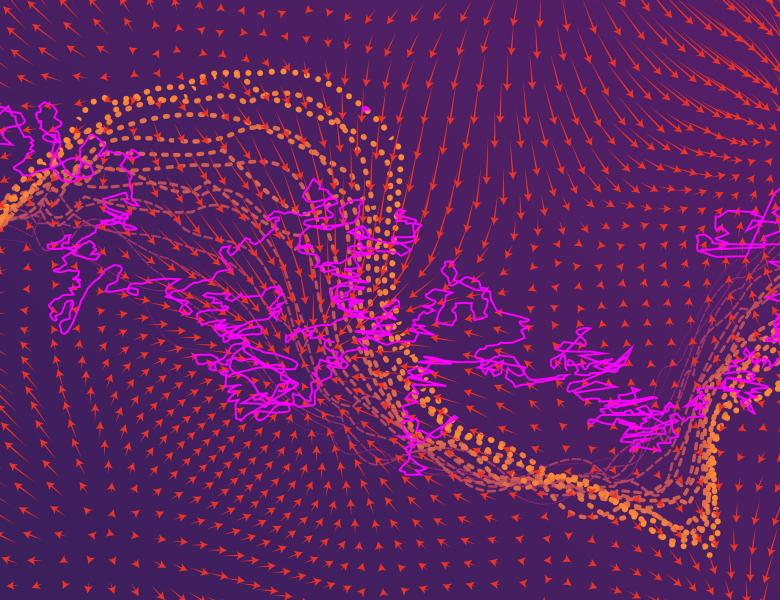
Interacting particle/agent systems are ubiquitous in science, from modeling of particles in Physics to prey-predator and colony models in Biology to opinion dynamics in economics and social sciences. It is a central subject in various fields to investigate the interaction laws and derive their governing equations, that can explain a variety of collective motions, such as crystallization of particles, clustering of opinions on social events, and coordinated movements of ants, fish, birds, and cars. A common belief in scientific discovery is that the laws of interactions between the agents are quite simple, for example, they depend only on pairwise interactions, and only on pairwise distance in each interaction.
In this talk, we consider the following inference problem for a system of interacting particles or agents: given only observed trajectories of the agents in the system, can we learn what the laws of interactions are? We would like to do this without assuming any particular form for the interaction laws, i.e. they might be "any" function of pairwise distances. We cast this as an inverse problem, and study it in the case where the interaction is governed by an (unknown) function of pairwise distances. We discuss when this problem is well-posed, and we construct estimators for the interaction kernels with provably good statistical and computational properties. We measure their performance on various examples, which include extensions to agent systems with different types of agents, second-order systems, and stochastic systems. We also conduct numerical experiments to test the large-time behavior of these systems, especially in the cases where they exhibit emergent behavior. This is based on the joint work with Fei Lu, Mauro Maggioni, Jason Miller, and Ming Zhong.
All scheduled dates:
Upcoming
No Upcoming activities yet


